Exploring the oddest places on Earth offers a glimpse into the planet’s most unusual and captivating landscapes. From fiery craters and pink lakes to ancient geoglyphs and underground towns, these destinations showcase nature’s eccentricities and human ingenuity. Each location is a testament to the diversity and wonder that exists in our world, providing unforgettable experiences for the adventurous traveler. Discover the fascinating stories and unique features that make these spots some of the most intriguing places you can visit.
The Door to Hell, Turkmenistan
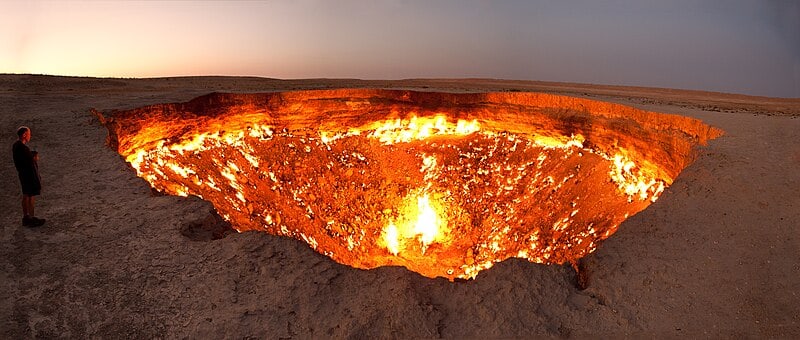
In the Karakum Desert of Turkmenistan lies the Darvaza gas crater, commonly known as the “Door to Hell.” This fiery crater has been burning since 1971 when a Soviet drilling mishap caused the ground to collapse, releasing methane gas. Geologists set it on fire, expecting it to burn out in a few days, but it continues to blaze to this day. The 230-foot-wide crater glows ominously at night, creating a surreal, hellish landscape. Its perpetual flames and otherworldly appearance make it a mesmerizing, if eerie, tourist attraction.
The Wave, Arizona, USA
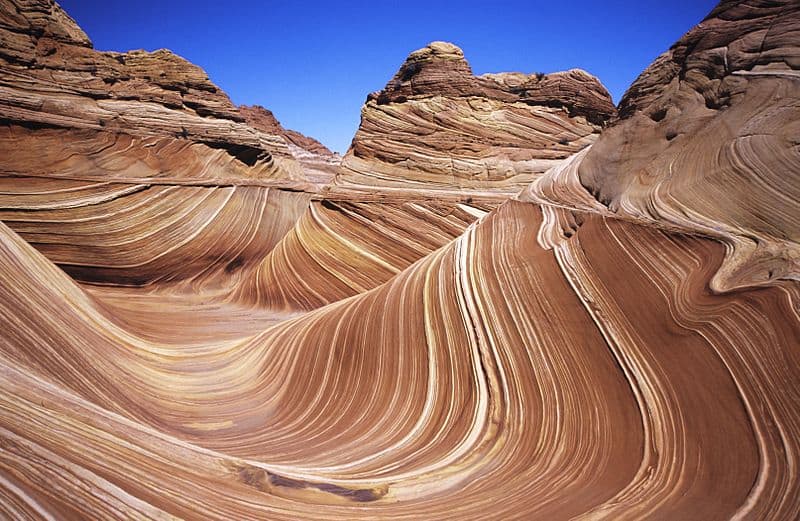
Nestled in the Coyote Buttes North area of Arizona, The Wave is a stunning sandstone rock formation known for its wave-like patterns and vibrant colors. Its swirling designs are the result of ancient sand dunes that turned to rock over millennia. Access to this natural marvel is highly regulated, with only 20 permits granted per day to preserve its delicate beauty. Hiking to The Wave is challenging but rewarding, offering a surreal landscape straight out of a painting. The formation’s unique shapes and hues make it a favorite among photographers and adventurers alike.
The Catacombs of Paris, France
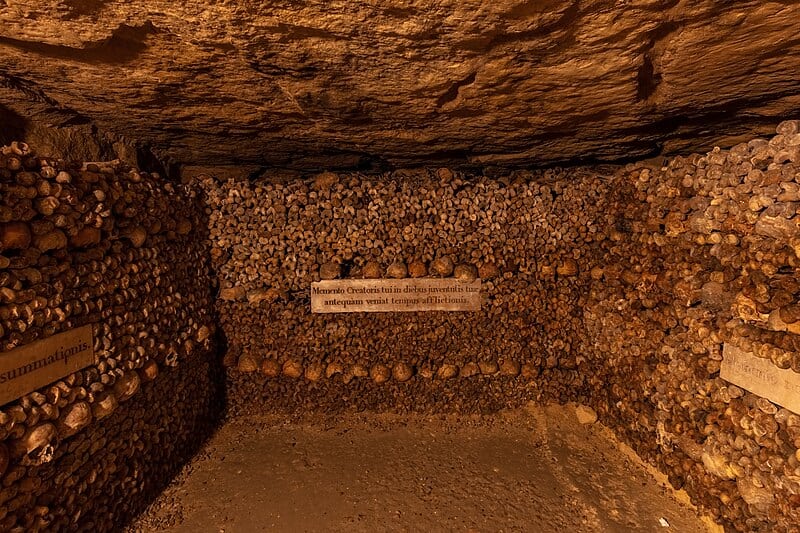
Beneath the bustling streets of Paris lies a macabre, labyrinthine network of tunnels and chambers known as the Catacombs. This underground ossuary holds the remains of over six million people, transferred here from overcrowded cemeteries in the late 18th century. The walls are intricately lined with skulls and bones, creating a haunting, yet strangely artistic, atmosphere. A small section is open to the public, providing a chilling glimpse into the city’s history. The eerie silence and the sheer volume of human remains make it one of the oddest places you can visit.
Fly Geyser, Nevada, USA
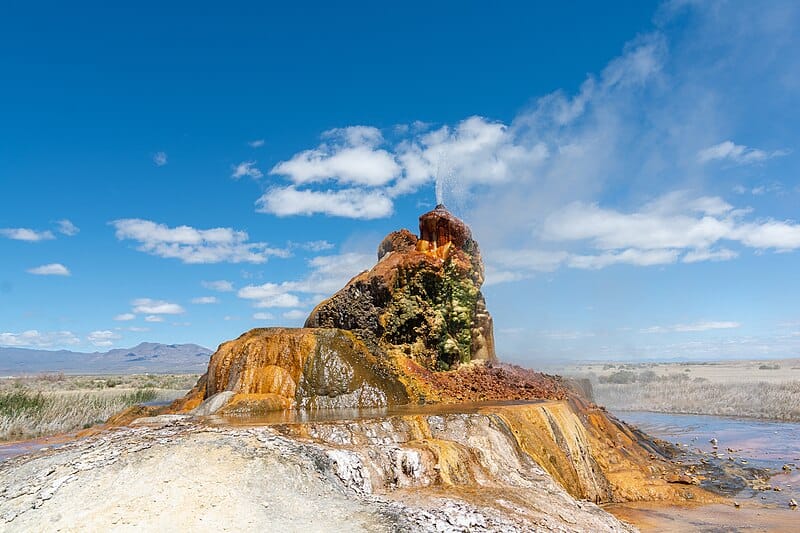
Fly Geyser is an accidental geothermal geyser located on private land in the Black Rock Desert of Nevada. It was created in 1964 when a geothermal test well was improperly capped, resulting in a stunning, multicolored mound of mineral deposits. The continuously spouting geyser is covered in vibrant green and red algae, adding to its otherworldly appearance. Access is limited, but guided tours allow visitors to witness this natural marvel up close. Its constantly evolving shape and vivid colors make Fly Geyser a captivating sight.
Red Beach, Panjin, China
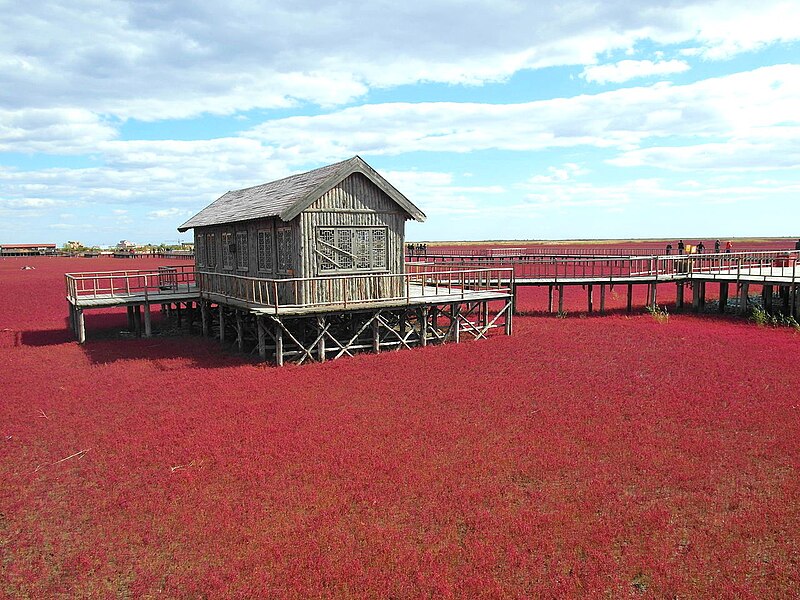
Red Beach in Panjin, China, is a striking natural phenomenon where the coastal marshlands are covered in a vibrant red seaweed called Sueda. This unique landscape is most vivid in autumn when the seaweed reaches its peak color. The crimson expanse, juxtaposed with the blue water and sky, creates a breathtaking scene. Boardwalks allow visitors to explore the area without disturbing the delicate ecosystem. Red Beach’s unique beauty and ecological significance make it a must-visit destination for nature lovers.
Spotted Lake, British Columbia, Canada
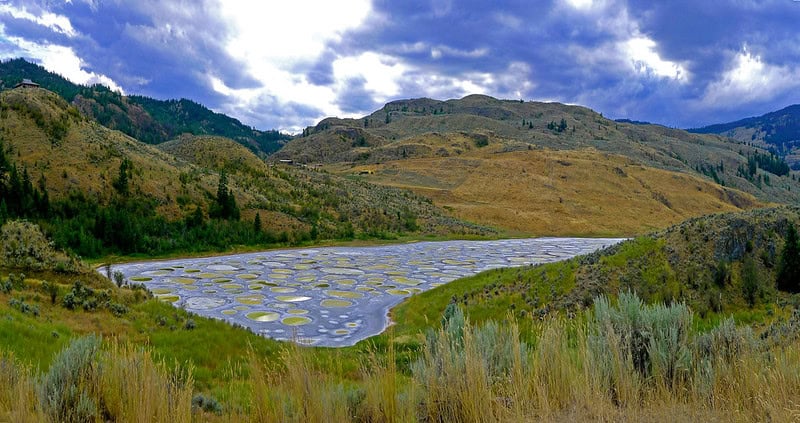
Spotted Lake, located in British Columbia, Canada, is known for its unusual polka-dot appearance. During the summer, the lake’s water evaporates, leaving behind large, colorful mineral deposits. The varying mineral concentrations create a mosaic of white, green, and yellow spots. This natural spectacle has been revered by indigenous peoples for centuries and is considered sacred. Its surreal appearance and cultural significance make Spotted Lake a fascinating and odd place to visit.
Pamukkale, Turkey
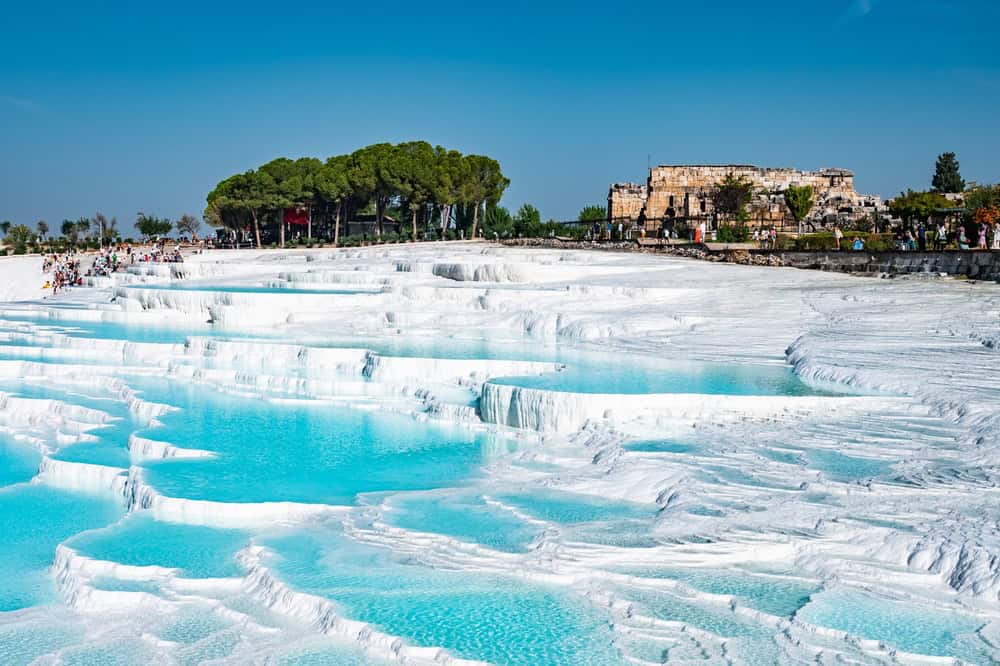
Pamukkale, meaning “Cotton Castle” in Turkish, is a stunning natural site in southwestern Turkey known for its white terraces made of travertine. These terraces are formed by hot spring waters that cascade down the mountainside, depositing calcium carbonate. The result is a surreal landscape of gleaming white basins filled with turquoise water. Visitors can walk on the terraces and bathe in the thermal waters, which have been used for therapeutic purposes since ancient times. Pamukkale’s unique beauty and historical significance make it a captivating destination.
Giant’s Causeway, Northern Ireland
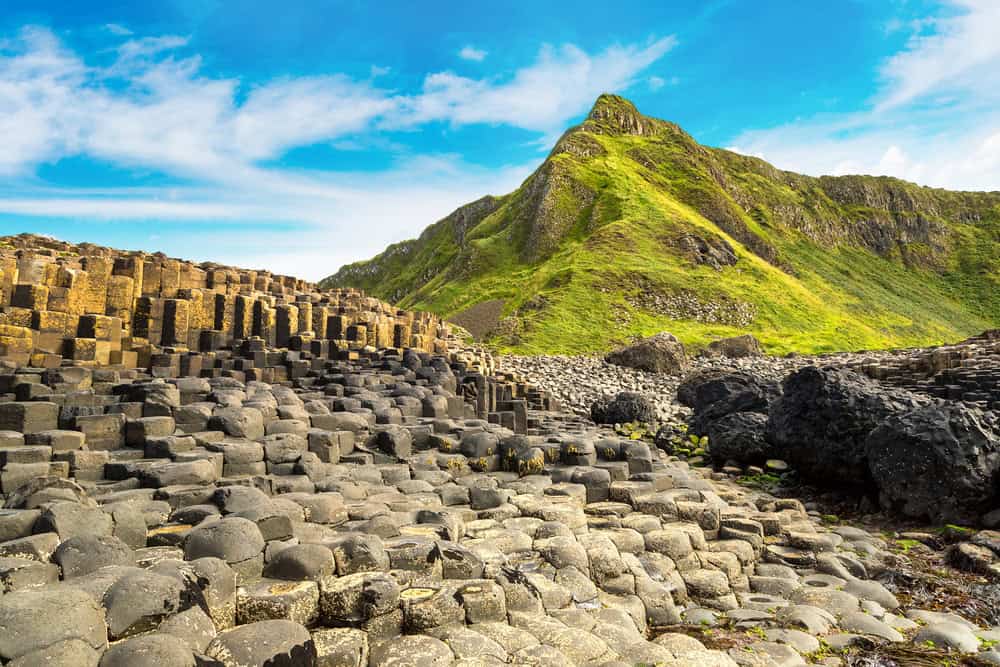
Giant’s Causeway is a remarkable natural formation on the coast of Northern Ireland, consisting of about 40,000 interlocking basalt columns. These hexagonal columns were created by an ancient volcanic eruption, resulting in a striking, geometric landscape. Legend has it that the causeway was built by the giant Finn McCool as a bridge to Scotland. The site is both a UNESCO World Heritage Site and a National Nature Reserve. Its unique geological features and mythical associations make it a must-see destination.
Socotra Island, Yemen
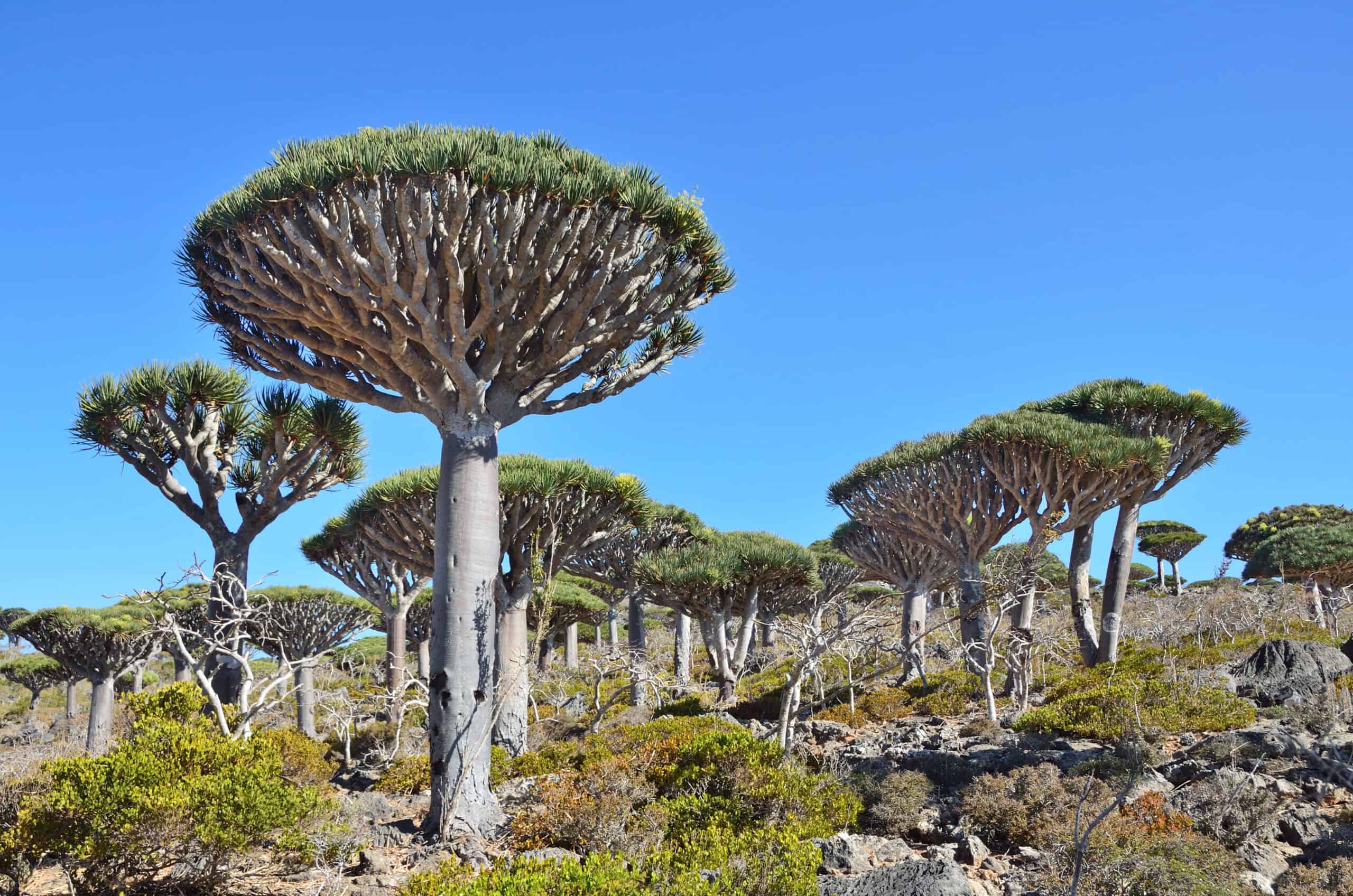
Socotra Island, part of Yemen, is often described as the most alien-looking place on Earth. It is home to a number of endemic plant species, the most famous being the dragon’s blood tree, which resembles an upturned umbrella. This remote island has a unique biodiversity, with flora and fauna found nowhere else on the planet. Its otherworldly landscape includes white sand dunes, limestone caves, and pristine beaches. Socotra’s isolation and distinctive ecosystem make it a fascinating destination for adventurous travelers.
Mount Roraima, Venezuela
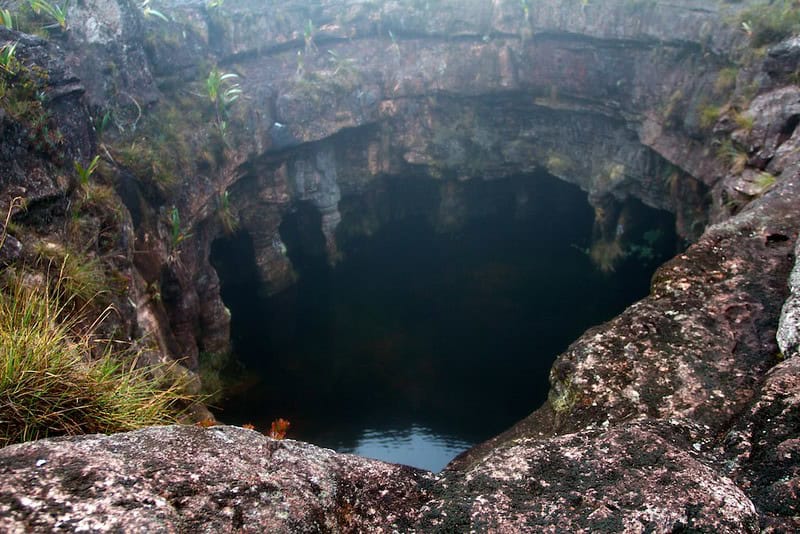
Mount Roraima, located at the border of Venezuela, Brazil, and Guyana, is a tabletop mountain (tepui) that inspired Arthur Conan Doyle’s novel “The Lost World.” Its sheer cliffs rise dramatically from the surrounding rainforest, creating a stark, isolated plateau. The summit is often shrouded in clouds, adding to its mysterious allure. Unique plant and animal species inhabit the plateau, many of which are found nowhere else on Earth. The challenging trek to the top rewards visitors with breathtaking views and a sense of being on another planet.
Lake Hillier, Australia
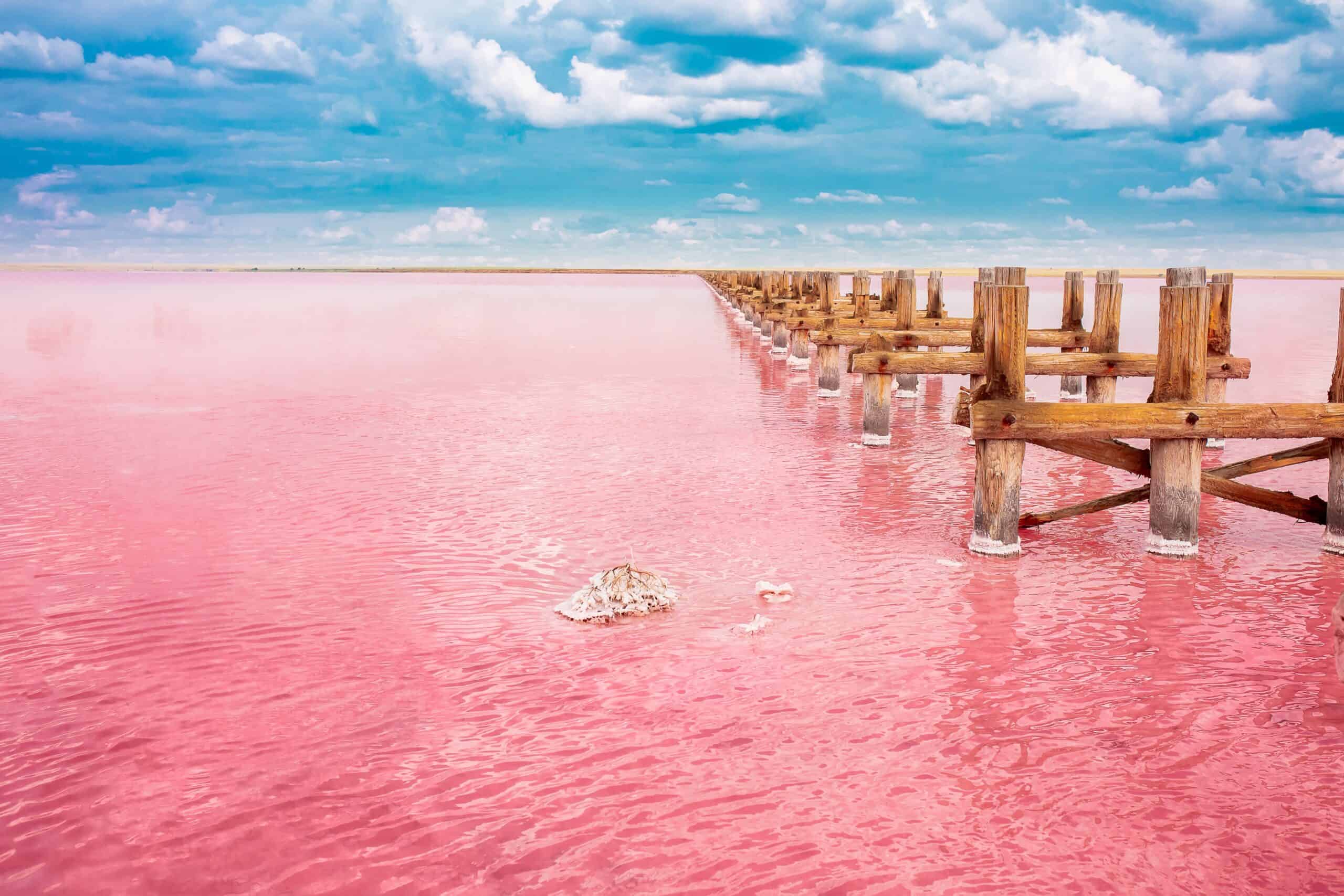
Lake Hillier, located on Middle Island in Western Australia, is famous for its striking pink color. The lake’s vibrant hue is due to the presence of a specific type of algae and high salinity levels. Surrounded by a rim of white salt and lush green forests, the pink lake creates a stunning contrast. Despite its unusual color, Lake Hillier is safe to swim in, though access is restricted to preserve its pristine condition. This odd natural wonder remains a captivating sight for those who see it.
Chocolate Hills, Philippines
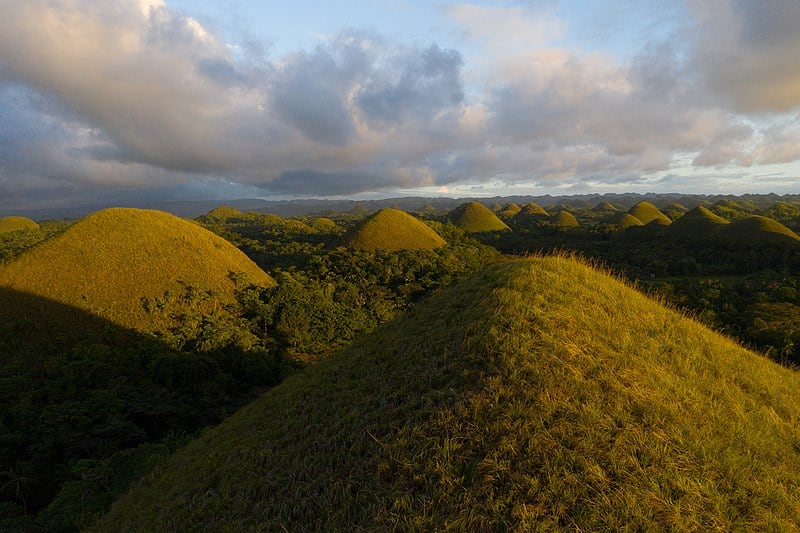
The Chocolate Hills in Bohol, Philippines, are a series of at least 1,260 conical hills that turn brown during the dry season, resembling chocolate drops. These unique geological formations are covered in green grass that turns brown, hence the name. Legend says the hills are the tears of a giant who lost his love. The hills are a natural monument and one of the country’s top tourist attractions. Their uniform shape and unusual color change make them an intriguing and picturesque destination.
Antelope Canyon, Arizona, USA
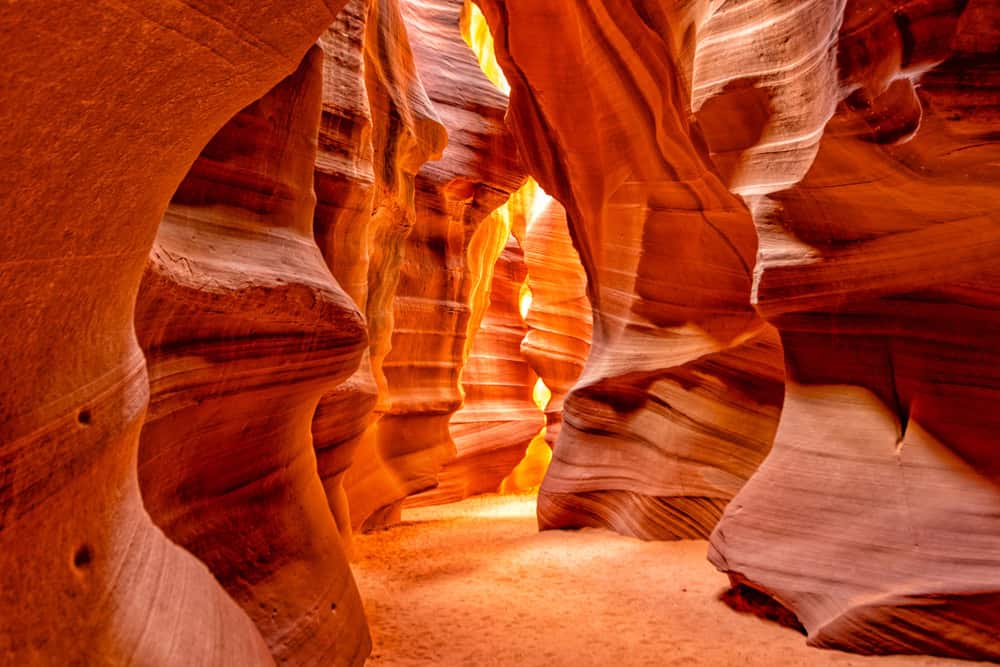
Antelope Canyon, located on Navajo land in Arizona, is a slot canyon renowned for its wave-like structure and light beams that filter down from above. The canyon’s smooth, flowing walls were sculpted by flash floods and erosion over thousands of years. Sunlight filtering through narrow openings creates mesmerizing shafts of light, especially in the summer. The canyon is divided into two sections: Upper Antelope Canyon (The Crack) and Lower Antelope Canyon (The Corkscrew). Its ethereal beauty and photographic appeal make it a popular, albeit unusual, destination.
Socavon de Ojuela, Mexico
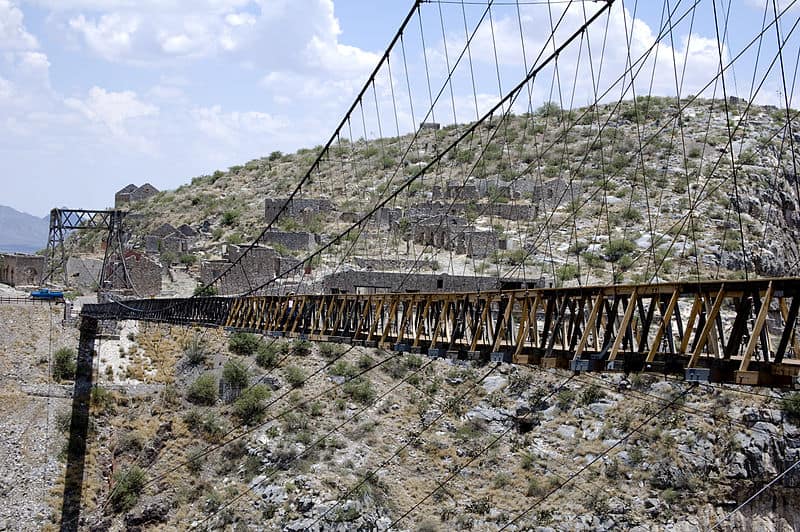
The Socavon de Ojuela, located in Durango, Mexico, is a ghost town known for its eerie suspension bridge and abandoned mines. The town was once a bustling mining community, but it was abandoned in the early 20th century. The suspension bridge, built in 1898, spans a deep canyon and offers a thrilling, if nerve-wracking, walk. The decaying buildings and old mining equipment add to the ghostly atmosphere. Visiting Socavon de Ojuela is like stepping back in time, with an added sense of adventure.
Marble Caves, Chile
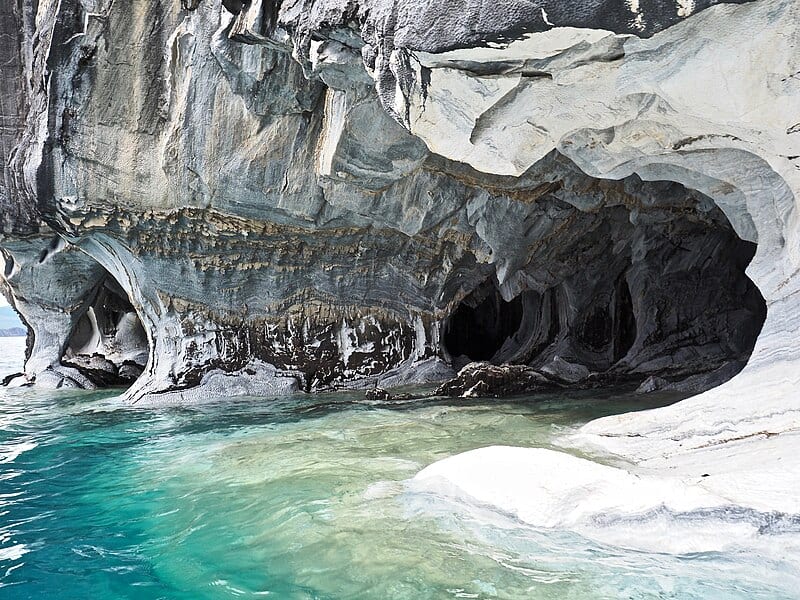
The Marble Caves, located in Patagonia, Chile, are a series of stunningly beautiful caverns carved into marble by the turquoise waters of General Carrera Lake. The swirling patterns and vibrant colors of the marble reflect off the clear, blue water, creating an otherworldly effect. These caves can only be accessed by boat, adding to their allure. The ever-changing light and water levels create a dynamic, mesmerizing environment. The Marble Caves are a true testament to the power of natural erosion and one of the oddest places to visit.
Kawah Ijen, Indonesia
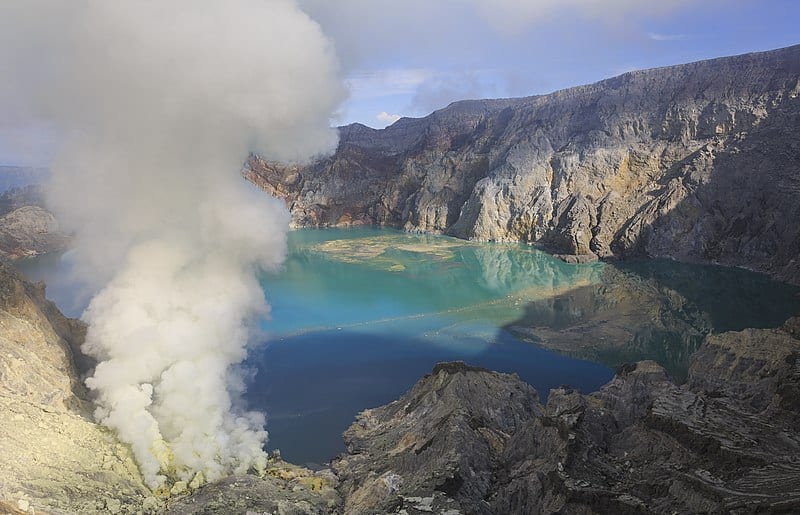
Kawah Ijen, located in East Java, Indonesia, is an active volcano known for its striking blue flames, caused by sulfuric gases igniting as they escape the crater. The crater also contains a large acidic lake, the largest of its kind in the world. The blue flames are best seen at night, creating a surreal and eerie spectacle. Sulfur miners work in the harsh conditions of the crater, adding to the dramatic scenery. Kawah Ijen’s unique natural phenomena make it a compelling, if unusual, destination.
Goblin Valley State Park, Utah, USA
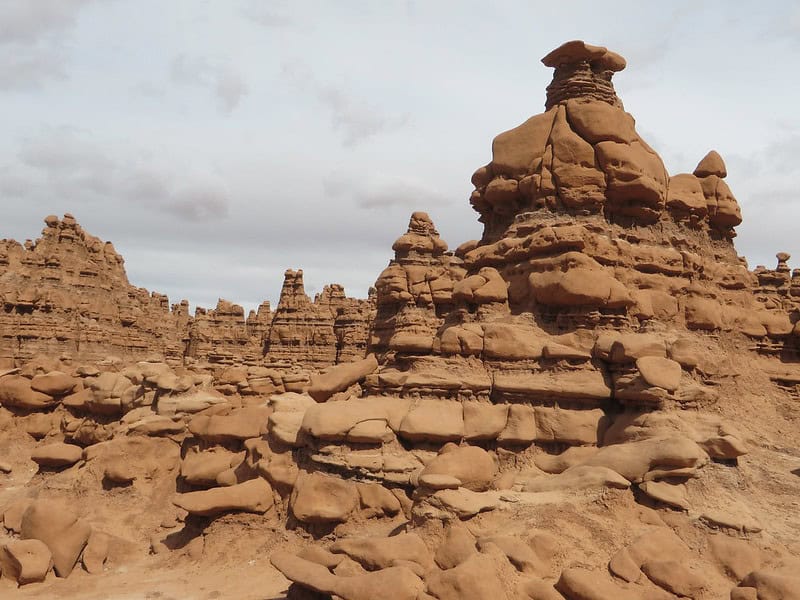
Goblin Valley State Park in Utah is known for its whimsical, mushroom-shaped rock formations called hoodoos. These sandstone formations, shaped by erosion over millions of years, resemble a landscape straight out of a fantasy novel. The valley’s unusual appearance has earned it the nickname “Goblin Valley.” Hiking and exploring the park offers visitors a chance to see these unique rock formations up close. Goblin Valley’s otherworldly landscape and peculiar rock shapes make it a fascinating destination.
Salar de Uyuni, Bolivia
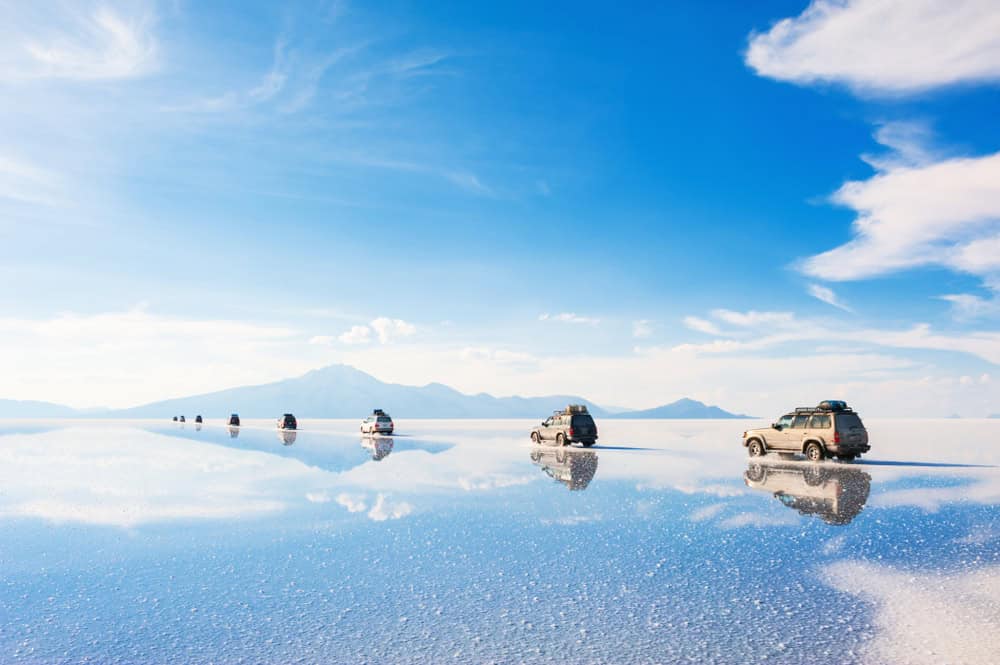
Salar de Uyuni, located in southwest Bolivia, is the largest salt flat in the world, covering over 10,000 square kilometers. During the rainy season, a thin layer of water turns the salt flat into a giant mirror, reflecting the sky and creating a surreal, infinite horizon. The flat is also home to the famous “island” of Incahuasi, covered in giant cacti. The stark, white landscape and mirror effect make Salar de Uyuni a photographer’s paradise. Its unique appearance and vastness create an otherworldly experience for visitors.
Coober Pedy, Australia
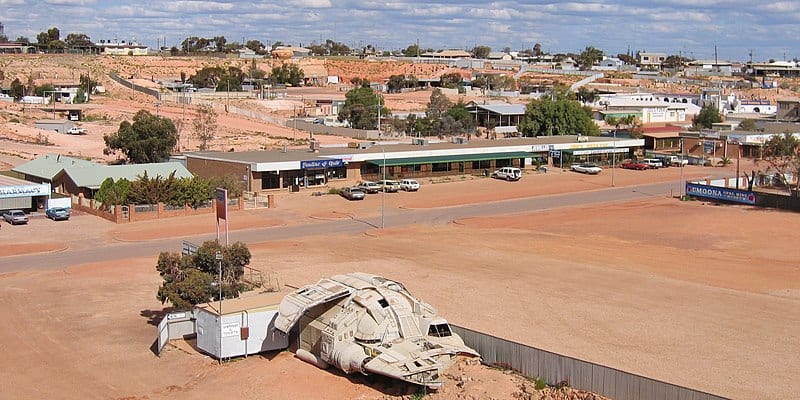
Coober Pedy, known as the “opal capital of the world,” is a remote town in South Australia where residents live underground to escape the extreme heat. The town’s subterranean homes, shops, and churches are carved into the rock, creating a unique underground community. Coober Pedy’s landscape is dotted with mounds of excavated earth from opal mining. Visitors can tour the underground dwellings and learn about the town’s mining history. This unusual way of life makes Coober Pedy a truly odd and fascinating place to visit.
The Nazca Lines, Peru
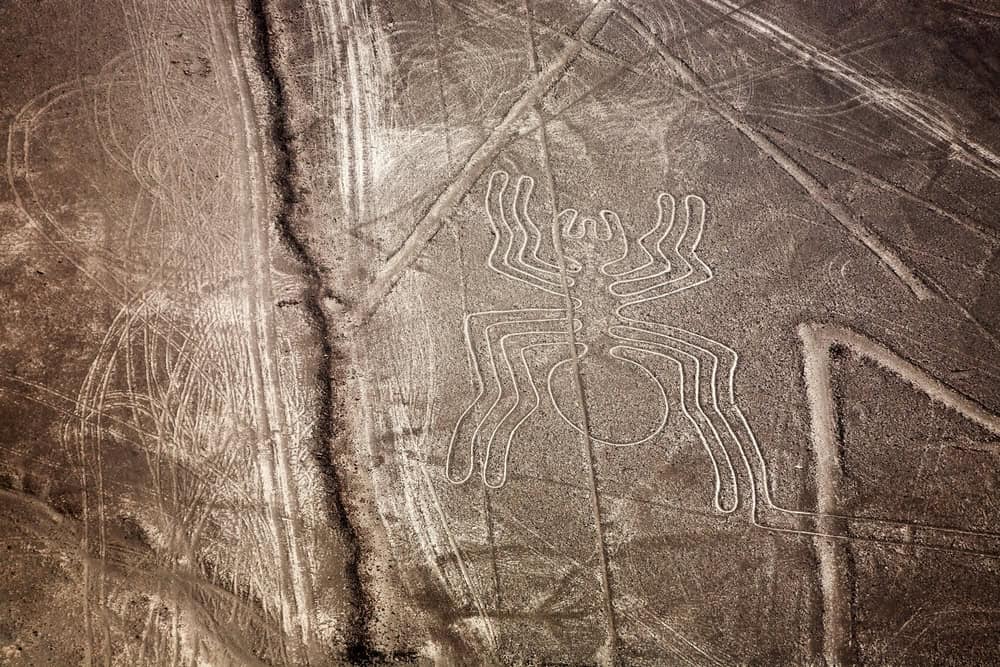
The Nazca Lines, located in the Nazca Desert of southern Peru, are a series of ancient geoglyphs etched into the desert floor. These massive designs, depicting animals, plants, and geometric shapes, can only be fully appreciated from the air. Created by the Nazca culture between 500 BCE and 500 CE, the purpose of these lines remains a mystery. The sheer size and precision of the geoglyphs are awe-inspiring. The Nazca Lines’ enigmatic origins and grand scale make them one of the world’s oddest and most intriguing archaeological sites.
This article originally appeared on Rarest.org.
More From Rarest.Org
Exploring the world by train offers a unique blend of luxury, comfort, and breathtaking scenery. From the historic elegance of the Venice Simplon-Orient-Express to the stunning landscapes traversed by the Rocky Mountaineer, these journeys provide unparalleled experiences. Read more.
Collecting Harry Potter memorabilia is a passion for many fans. The most sought-after items are those that hold unique value and historical significance. Here are some rare Harry Potter collectibles that every fan would love to own. Read more.
When it comes to large dog breeds, their size, strength, and majestic presence often come with a hefty price tag. These dogs are not only impressive in stature but also in the cost of acquiring and maintaining them. Read more.



